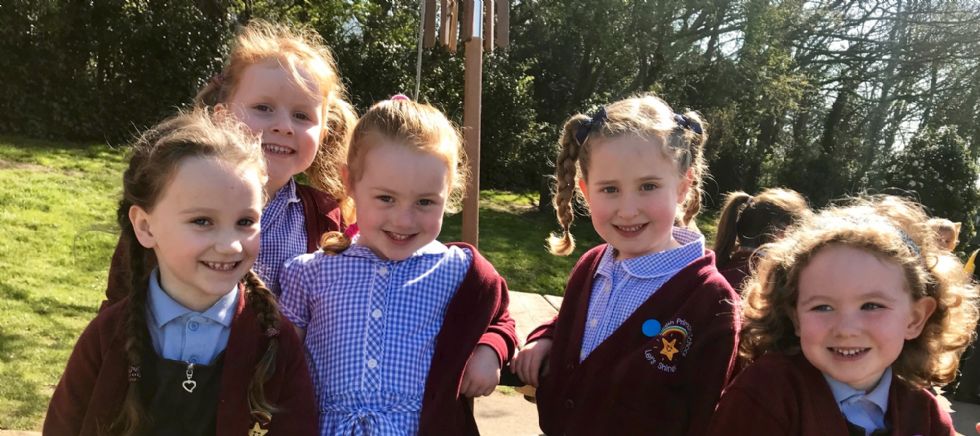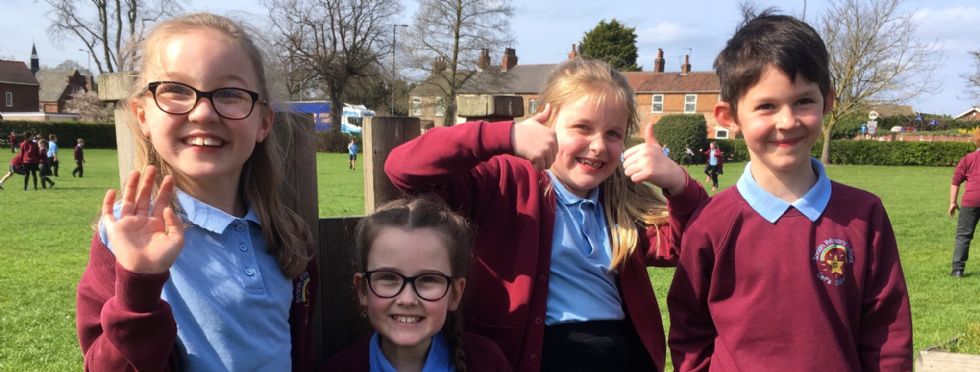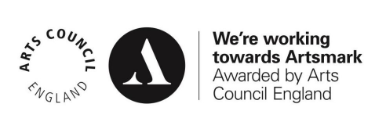Anxiety
Anxiety is persuasive and determined and it’s masterful at organising families, days and lives around itself. It can be easy to allow anxiety to take over and control the way you and your family live. If you have a child who struggles with anxiety, remember – it’s very possible to change anxiety’s hold on your child’s life. With guidance, information and strategies, anxiety can be addressed. If you are concerned about your child please contact Miss Timney on 01405 860452. The information below may help with understanding anxiety in children and how we can support our young people through waves of anxiety.
An extract from: Anxiety in Children: A Metaphor to Put You In Their Shoes (And Right Beside Them)
Posted by Karen Young
When our kids are in the thick of anxiety, they’ll be aware that something doesn’t feel right, but they might not have exactly the right words to explain what’s happening for them. All they’ll know is that they feel as though something bad might happen. This might come to you in many ways, including ‘what ifs’, avoidance, anger, tears, a sick tummy. Everything inside them is telling them something isn’t right, so being told there’s nothing to worry about won’t help, and runs the risk of making things worse. There’s a good reason for this.
Telling them there’s nothing to worry about won’t help. And there’s a good reason for this …
Anxiety is NOT a sign of breakage. It’s a sign that a strong, healthy, magnificent brain is doing exactly what brains are meant to do – protect us from threat. It won’t matter that there’s no clear threat – anxiety doesn’t care about that. Anxiety comes from a part of the brain called the amygdala. It’s instinctive, protective, and incredibly hardworking. It’s spectacularly good at doing what it does, which is keeping us safe. The amygdala switches on when it thinks there might be trouble – and fear of separation from loved ones, getting sick, something happening to someone they love, exclusion, rejection, embarrassment all count as trouble. When the amygdala is switched on, it’s laser focussed on keeping us safe.
One of the things that happens in the brain’s quest to keep us safe is the pre-frontal cortex is ‘sent offline’. The pre-frontal cortex is the part of the brain that is able to think rationally, calm big feelings, problem-solve, analyse, and think through consequences. The temporary ‘shutdown’ of the pre-frontal cortex is an adaptive response, designed to help keep us safe in times of threat. Here’s how it works. When there’s a threat, instinct kicks in with incredible force and urgency to make sure we deal with the immediate threat. This is a brilliant piece of design if, say, a pan on the stove catches fire. It’s because of this instinct that you would move to deal with the flames before anything else. It doesn’t want you to take too long thinking about the best way to put out a stove fire, or the consequences of every possible option, or how it happened – there will be time for that later. It just wants you to smother the flames before they get out of control. This doesn’t mean the response will always be a good one. Without the full involvement of the pre-frontal cortex, sometimes the decisions we make in the heat of the moment are breathtakingly bad. We’ve all been there, but that’s instinct for you – all action and not a lot of thought, at least until the crisis is over and the pre-frontal cortex is back on board. What this means is that when your child (or you or me or anyone) is anxious, the part of the brain that is receptive to rational information (such as ‘there’s nothing to worry about’), isn’t available.
(This is one of the reasons mindfulness has been proven to be so effective for anxiety. It strengthens the pre-frontal cortex, lowers activity in the amygdala (making it less reactive) and strengthens the connection between the two. When this connection is strong, they are more likely to work as a team – the pre-frontal cortex will sit out when it needs to, and be more active when it needs to, rather than letting an overactive amygdala run the mothership.)
There’s something else that happens during anxiety, when we tell our kids, ‘there’s nothing to worry about’. As with all feelings, one of the functions of anxiety is to recruit support. The ‘recruit’ isn’t necessarily done deliberately or intentionally by whoever is feeling the feeling. It’s just one of the things that tends to happen when we humans feel our feels – other humans turn towards us. When our kids are telling us something doesn’t feel right, we’re the recruit. When we tell them there’s nothing to worry about, it doesn’t stop them worrying. Instead, it sends a message to the protective amygdala that the threat just got bigger, because the important adult (the recruit) doesn’t get it. The message is that they’re alone with this because nobody understands. When this happens, that amygdala of theirs will work harder and more fiercely to protect them.
What does ‘working harder’ look like for an amygdala?
When the amygdala senses a threat, it surges us with a cocktail of chemicals including adrenaline and cortisol (the stress hormone). These chemicals are the fight or flight chemicals, designed to make us faster, stronger and more powerful. It initiates a series of physiological changes that all have a very good reason for being there, but which can feel confusing and frightening. When there’s nothing to fight or flee, they build up and cause the symptoms of anxiety. Like the car metaphor, explaining to kids what’s happening when they feel anxious can help them feel safe. It communicates that you understand, that what they’re feeling makes sense, and that they’re safe. Here’s what happens when anxiety switches on:
- The brain tells the body to stop being so extravagant with oxygen. Instead of using it on strong, deep breaths, the body is told to send it to the muscles to they can run or fight. Breathing changes from strong slow deep breaths to fast little breaths. Might feel puffed or a breathless. Cheeks might blush red and face might feel warm.
- Oxygen builds up and carbon dioxide drops (from over-breathing). Might feel dizzy, confused or sick.
- Heart beats faster to pump the chemical fuel efficiently around the body, particularly to the arms and legs. This can feel scary, like a heart attack. It’s okay though – it’s perfectly safe.
- Fuel gets sent to the arms (in case they need to fight) and to the legs (in case they need to flee). Arms and legs might feel tight or wobbly.
- The body cools itself down so it doesn’t overheat if it has to fight or flee. Might feel clammy or sweaty, even if its cold.
- The digestive system dials down so the fuel it was using to digest food can be used by the body for fight or flight. Might feel as though there are butterflies in your belly, or as though you’re going to vomit. Might get a dry mouth.
- The amygdala, which looks after anxiety also looks after other big emotions. When it’s turned up to high (as it is during anxiety) other emotions such as anger or sadness might also be turned up to high volume. Might feel angry or as though you want to burst into tears, sometimes for no reason at all.
Okay. So if, ‘there’s nothing to worry about’ is out, what can I do instead?
It’s easier for kids to deal with difficult feelings – and anxiety is one of the big ones – when we meet them where they are. We might not be able to take away their anxiety completely, but there’s no need to. A bit of anxiety is normal and healthy and we couldn’t get rid of it even if we wanted to. What we can do though, is ease their anxiety back to small enough.
When they are anxious, they need to know that we’re there for them, that we believe them, and that we believe in them. The words that can do this are, ‘I get it’. Or, ‘I can see that something doesn’t feel right for you.’ They also need to know that what they’re feeling makes sense. ‘It makes sense that you feel the way you do.’ When we tell our kids that we get it, we’re letting them know we’re there. This doesn’t mean it will switch off their anxiety straight away. New things take time to take hold. What you’re doing is letting the fierce protective amygdala know that it’s done it’s job and found a worthy recruit to support them, and that it can step down. It’s about holding the ground steady so they can find their way to feeling strong and in control again.
Ride the wave with them.
Anxiety is like a wave. Like any feeling, anxiety will come and then it will go. When our kids are on that wave, it can be scary – for them and for us – but we don’t need to lift them off. The wave won’t break them. When we believe this, they can start to believe it too. For any loving parent, the temptation to lift our children out of the way of anxiety can be spectacular. Here’s the rub though – avoidance has a powerful way of teaching them that the only way to feel safe is to avoid. This makes sense, but it can shrink their world.
We also don’t want to go the other way, and meet their anxiety by telling them there’s nothing to worry about. They won’t believe it anyway. The option is to ride the wave with them. Breathe, be still, and stay in the moment so they can find their way there too. This can be tough for them. Anxiety will haul them into the future and try to buddy them up with plenty of ‘what-ifs’, which are the raging fuel for anxiety. Let them know you get it, that you see them, and that you know they can do this. They won’t buy it straight away, and that’s okay. The brain learns from experience, so the more they are brave, the more they are brave. They’ll have plenty of courage and strength inside them, but in the thick of anxiety, it will feel a little unreachable for them. This is when we can ‘loan’ them ours. If we can ride the wave with them, with stillness and presence, instead of fighting it or needing to change it, we make our courage and our calm more available to them than our anxiety about their anxiety.
What else can I do when they’re anxious?
During anxiety, the brain is in survival mode, so it isn’t able to receive or process rational explanations or engage in unfamiliar strategies to find calm. Any explanation of why they feel the way they do when they have anxiety has to happen when they are calm, and it might take a few conversations. Similarly, the strategies that can help them feel better also have to be practised and explained while they are feeling calm. Here are two of them:
- Strong, deep breathing.
One of the first things that happens during anxiety is breathing becomes short and shallow. Although the world has known for centuries about the powerful, calming effects of breathing, science has only relatively recently got on board. Dr. Herbert Benson, professor, cardiologist, and founder of Harvard’s Mind/Body Medical Institute, has established that the relaxation can neutralise the physiological effects of the fight or flight response. Remember though, this will need to be practised during calm times first. There are a couple of ways to do this:
Hot Cocoa Breathing: ‘Pretend you have a mug of hot cocoa in your hands. Smell the warm chocolatey smell for three, hold it for one, blow it cool for three, hold it for one. Repeat three or four times.’
Figure 8 Breathing: Anxiety feels flighty, and touch during anxiety can feel comforting and grounding. Whether the touch comes from you or them, it doesn’t matter (but obviously only touch them if they want you to). Here is a way to bring touch and breathing into one beautiful union. Imagine drawing a figure 8 on your skin (arm, leg, back – wherever feels lovely) with your index finger. As you’re drawing the first half of the figure 8, breathe in for three. When you get to the middle, hold your finger still for one. Then, for the second half of the figure 8, breathe out for three. When you get to the middle, hold for one again. Repeat three or four times. Eventually, this can be something they can access on their own, quietly and privately wherever they are to find calm when they are anxious.
- Grounding.
Anxiety is a sign that a brain has been hauled into the future, and is thinking about the things that could go wrong. You’ll probably be way too familiar with the ‘what ifs’ that come with this. (But what if this happens? Or what if that happens?) Brains love being in the now, but sometimes they need a little help to get there. Here’s a way to do that: ‘Tell me 5 things you see … 4 things you hear … 3 things you feel against your skin (the breeze/ the ground/ your clothes against your skin) … 2 things you can smell … 1 thing you can taste.’ The order doesn’t matter, but it will probably be easier to find things they can see or hear than things they can smell or taste.
And finally …
One of the hardest parts of being a parent is watching our children struggle and not knowing how to help them. What you need to remember is that you don’t need to fix anything. You’ll want to – of course you will – but they are brave and strong and they have everything in them to do what they need to do. When you’re on board, letting the space around you be calm, safe and reachable, they’ll have it even more.








